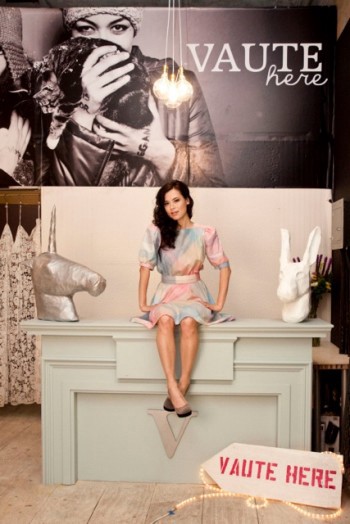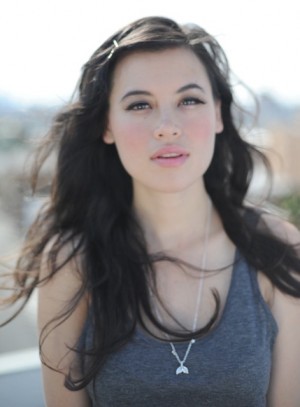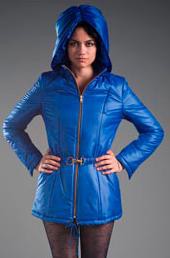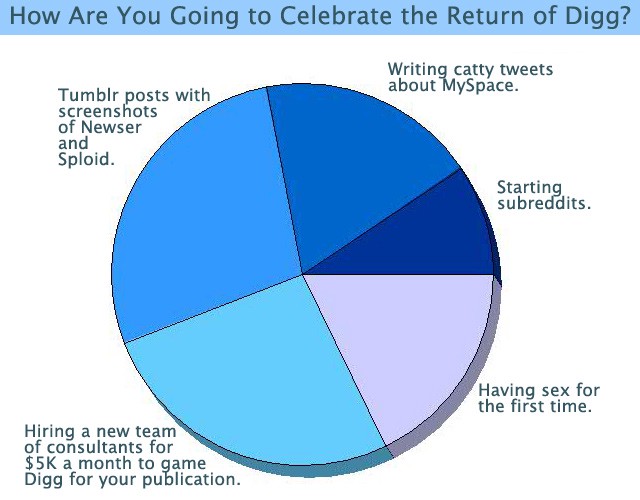For People In Los Angeles Who Have Considered Suicide But A Website Is Enuf
Do you live in Los Angeles? Of course you do! So they made a wacky website for you.
Esquire: "Steal The Bob Costas Olympic Look"

Do you want to “get the look” sported atop Bob Costas’ head? Esquire will tell you how to get that hair. HOW/WHY? I cannot imagine. His hair is terrible! It seems… perhaps unreal! “Monochromatic and/or synthetic,” says the Chicago Tribune. I disbelieve his hair!
On the other side of his head, however, you could totally get that Bob Costas face-look — but it’ll cost you a pretty penny.
Goodbye, Reader! We Were Never Meant To Be
Goodbye, Reader! We Were Never Meant To Be
by Ned Beauman

In a 2005 article about hecklers, Stewart Lee related an anecdote about his fellow stand-up comic Daniel Kitson. “Privately, the debate continues amongst comedians, ‘what is Daniel Kitson doing?’ Why, many wonder, does he do [small Edinburgh venue] The Stand when he could do the big room at Assembly? Why does he insist on shaking off half the following he has established every couple of years by doing a sensitive story show? Why doesn’t he have a nice haircut? Surely he could afford it now. But Kitson once told me, that after his Perrier nomination, he was doing a run at the Soho theatre. Sitting in a toilet cubicle one night he overheard some of his audience standing at the urinals talking, didn’t like how they sounded, didn’t like them, and realised he would have to begin a process of refining his fanbase.”
Is it OK to want to refine your fanbase? I hope so, because I quite often seem to find myself refining my fanbase by accident. Recently, for instance, I gave an interview to The Observer in which I said that I found some of the positive online reviews of my first novel more irritating than the negative ones, because of the way those people construed the book, and that in my second novel I deliberately emphasized whatever quibbles they did have in order to “slough them off.” This caused a small commotion, and, I fear, a small fanbase refinement. One of the weird things about publishing these days is that there is an enormous appetite for snuggling into the interior world of the writer — through readings, interviews, Twitter, creative writing programs, essays like this one — almost as if the book itself is not the point of it all but rather an inconvenient membrane dividing the writer from her public; and yet there is still no appetite whatsoever for considering some of the less congenial truths of the writerly experience: That praise can be more dispiriting than criticism. That we don’t necessarily respect every single one of our readers. That sometimes we write to repel as much as we write to attract. Occasionally, in interviews, you can hear these attitudes humming in the background, but they’re not often admitted, even though to deny them is to deny that writers are human beings with human psychologies.
(There are glorious exceptions, of course. In My Prizes, Thomas Bernhard recalled receiving the Austrian State Prize for Literature: “What possibly had really been dreamed up by idiots as an honor, to me, the more I thought about it, was a despicable act, a beheading would be putting it too strongly but even today I feel the best description of it is a despicable act.”)
In real life, no one thinks every compliment is a good compliment. “I love your outfit — it’s so practical!” Authors, especially, are expected to have rigorous critical faculties as part of the basic equipment for the job, so there is no reason why they would abandon those faculties just because the subject happened to be their own work. To be so narcotised by the mere fact of someone saying pleasant things about you that you become absolutely indifferent to their content is the behavior of an egotist, a praise addict, like someone eating brownie mixture out of the packet because they want a sugar rush and they don’t care how they get it. In fact, when someone says to us, “It’s such a treat to switch off my brain for an hour and dive into your fun little romp of a book,” or “I liked this almost as much as I like the last novel by [successful author whose chapters often end with italicised, single-sentence paragraphs such as “Not this time, baby” or “And wouldn’t that be something?”],” we are not thrilled about it, even though they’re trying to be nice. A beheading would be putting it too strongly, but… Sure, there’s nothing more mockable than a writer who’s worried that people aren’t taking her seriously enough. But worrying that people aren’t taking you seriously enough is, at its deepest level, worrying that you haven’t written a book that deserves to be taken seriously, and wondering how you can do better.
My own first drafts are infested with cheap jokes, hollow sentiments, glib insights. Those come very easily to me. Consequently, my greatest fear as a writer is pandering, because I know the temptation is always at hand. Sometimes I think that if I had the opportunity I would interleave my prose with photographs, like W.G. Sebald, except that my photographs would be of dogs wearing hats.
And one way to exterminate pandering in your work is to pay close attention to the responses you get. The single biggest surprise to me as a debut author gaining an audience for the first time was the extent to which people insist they can’t enjoy a novel without any likeable characters. (Which rules out Lolita, Heart of Darkness, The Trial, Animal Farm, The Stranger, Rabbit, Run, A Clockwork Orange, The Postman Always Rings Twice, Jealousy, A Good Man is Hard to Find, Last Exit to Brooklyn and much of the rest of the twentieth-century canon.) This is a useful example, because when someone demands likeable characters — I know I’m generalizing scandalously here — that’s often representative of a broader inhospitality to a lot of the things I prize in fiction: confrontation, ambivalence, paradox, subversion, total moral candor. And a great Amazon review from someone with literary values that you suspect to be utterly incompatible with your own can mean two things. It can mean you have written a book of such resplendent universal appeal that it converts even your adversaries. I don’t think that’s very likely in my case, otherwise my sales would be a lot higher (although perhaps this is how Bruce Springsteen explains to himself the worshipful presence of Chris Christie at so many of his concerts). Or it can mean that you’ve been pandering — producing work that you don’t honestly believe in, just because you want to caper before a mass audience.
In other words, when I talk about sloughing off certain readers, it’s not that I have anything against those people, or that I’m too good for their money, or that I don’t want them to enjoy their reading at the end of a long day. It’s because if I can write a book that those people don’t particularly care for, that will be an indication — not a proof, but at least an indication — that I’ve finally produced an uncompromised expression of the values to which I aspire as a writer. If by some chance you’ve already read my stuff, and you’re thinking, “How can a guy who writes such fundamentally frivolous and vaudevillian books evince such a pompous concern for ‘paradox’ and ‘total moral candour’ and a lot of other things that exist nowhere in his work,” well, yes, that’s precisely what makes me so neurotic about this. I want to be a more serious writer than I am. I want to be a better writer than I am. In the distance I can hear the terrible barking of the dogs wearing hats.
This concern is as old as the avant-garde. Avant-garde writing doesn’t just take difficult new forms because they’re the only way of capturing difficult new realities. Avant-garde writing takes difficult new forms also because the average commuter can’t stomach them. Out of all the modernists, it may have been Bertolt Brecht, a frenemy of the protagonist of my new novel, who was most open about deliberately constructing his plays in such a way as to keep the petit bourgeois out of his theatres: “All those today who seem to have achieved some form of harmony have nothing in common with us,” he once wrote, “and only harm us by trying to be associated with us.” Yes, there’s something teenage about this impulse: if you’re a young punk rocker and you find out that your dad likes one of your songs — or that the governor of New Jersey does — you must immediately smash your instruments and decommission the band. And I would never claim to be avant-garde myself. But my point is that the desire to “refine the fanbase” exists in almost all art, openly or not. This will come as a surprise only if you believe that an artist’s priority is to give the maximum amount of pleasure to the maximum number of people. But if that was what I wanted to do, I would have started a gelato shop.
As a writer, you’re encouraged to courageously proclaim the truths that society won’t acknowledge — just as long as you’re meek in interviews. You’re encouraged to devote yourself for a lifetime to an arduous, marginal art form — just as long as you don’t come across as elitist. You’re encouraged to seclude yourself in an attic to produce the best work you possibly can — just as long as you reply to your fans on Twitter. You’re encouraged to pursue your own unique and ineffable vision — just as long as you’re responsive to feedback. It seems to me hardly necessary to point out that the qualities we expect of our authors today are not just irrelevant but hostile to the intellectual conditions in which good books are actually written. And this is why I’m not worried that being ungracious towards my admirers makes me sound rude. Because, as a grown-up reader, there’s not much that’s more insipid and regressive than demanding likeable characters. But there is one thing. Demanding likeable writers.
Ned Beauman’s second novel, The Teleportation Accident, was recently longlisted for the 2012 Man Booker Prize.
How Did You Get There, Vegan Fashion Designer Leanne Mai-ly Hilgart?
by Noah Davis

Leanne Mai-ly Hilgart is an animal lover with an entreprenurial spirit who founded a vegan fashion line. Vaute Couture is finding success — recently opening its first brick-and-mortar store in Williamsburg — but the founder quit her Ford Modeling contract and her MBA program, worked 80-hour weeks, and had to reinvent the female dress coat in order to get to this point. Over iced coffees, Hilgart talked about talked about unusual fashion, unusual work, and business as usual.
How did you end up with a vegan fashion line. Are you a fashion person or an animal person first?
Since I was eight, I’ve been raising money and awareness for animals. I would coordinate my friends to make arts and crafts that we would sell door-to-door to raise money for the local shelter. My business sense wasn’t there yet, I probably spent more on materials than we made, but my parents let me give all that money to the shelter. Then, my high school was dissecting cats, and I waged a campaign to require the right to alternative options for conscientious objectors. It was a really long fight, but I ended up garnering support for a bill that turned into a law requiring alternatives in all K-12 schools in Illinois.
I find that everyone has their own voice with their activism, and I developed mine in college, where I was running groups and focused on spreading awareness for animals and a compassionate lifestyle in a way that was really welcoming and recognized the compassion in everyone. Everyone is compassionate; not everyone knows all the ways we can easily help and not hurt others in our daily lifestyles.
Skipping forward, I can tell you that I searched for the thing that would be my contribution to raising awareness for animals, helping fight for their rights in a way that was productive, would get the most out of what I had to offer, and was something no one else was doing. This was outerwear. No one had made a warm dress coat that was vegan, and it was always there as an excuse as to why we still had to use animals for some things: “Well, we can’t completely get rid of animal products, we’d freeze without a wool coat.” And thus, this was my mission, to make sure there was no excuse to wear animals ever again.
Okay, going back, what were you studying DePaul?
I went to school to be a teacher, well, a principal by way of the typical teacher first career path. I wanted to start a school that would encourage others to speak up for what they believed in, for those who were treated by the system like bad kids because they were not cogs, not rule followers. Their voices were quieted and this was a disservice to society. But then, reality hit. During student teaching I realized that I never felt more not myself in my life. I couldn’t handle the confines of the system long enough to work on something new. I failed before I had started. I know now it’s important to give up early when it’s not right, but at the time it felt like a huge failure. I spent the next few years trying to figure out what exactly I was mean to do.
The first question was, what could I not keep myself from doing — when was I giddy, inspired, effortless? It wasn’t in my education classes, it wasn’t in my classes at all. It was outside my classes, where I was coordinating my animal rights organization, spreading awareness through events and collaborating with other groups to see what we could do together. I realized this was, in the “real” world, something you might call “marketing and events.” I swear it was more to me than that. I got an internship with Sittercity.com, which is a company that matchmakes parents with their ideal babysitters.
It was at Sittercity where I saw how a business could really touch a lot of things. I realized that starting a business — creating one to do good in every facet — was a great model for activism. It’s kind of like Kant. If the process itself is ethical — a moral end in itself — then you’re not just creating a business that gives a little bit of the profit to a nonprofit. You in yourself are creating good with each element of the business. Therefore, each element is a driver for change. On top of that, we can create a new voice for the animals that can reach more people, and connect with them in a new way.
I realized I had to create a business but I needed to figure out what it was going to be. I thought I needed an MBA to balance out my knowledge sets. I started a full-time MBA program at DePaul. I entered all these business plan competitions, and when I got there, nobody would really understand what I was trying to do. I didn’t fit a formula, my ideas weren’t normal or proven. I was terrible at getting and asking for approval.

Was this the fashion line idea?
No, I was working on other concepts. I felt like I needed to water it down to make it something that people would understand. I wanted to make it eco or something that would reach a market that could sustain it. It was almost too broad, though. I would do my elevator pitch, and the judges wouldn’t understand why I wanted to help so many things. They wanted to see the bottom line.
Between the summer of first year and second year, I got a modeling contract in Hong Kong and spent three months there. I was just modeling, and my brain needed something to do. Every night, I would go through a different concept and try to flesh it out. I was looking specifically for one that didn’t need too much capital to start up because it was the middle of the recession and there was no bank funding. I had always wanted a coat that was cute, warm, and cruelty-free. I didn’t think anyone else would want one, especially at the price it would cost to do that with no compromises. I Googled it, and I found tons of discussion boards with women asking for a coat exactly like that. I talked to girlfriend over Skype, and she said if I didn’t do it, no one would. I thought okay, I’ve got to do this.
I didn’t tell anybody except her and my ex. I realized that asking for approval of my ideas was something I never did in my life before business school. I had always just followed that driver inside me that said, “It must be done.” I just thought I was going to do it.
And then you did.
I came back, quit my MBA, quit my contract, and started on 80-hour weeks.
Did you have a plan?
One of the smartest things I did was that I didn’t write a business plan. That’s not the case for everybody, but I had spent so much time writing business plans the previous year that I had it in my head. When I started this, I just did it. The advantage was that I could constantly re-strategize. I could look at the situation and figure out what would be best. Every night, I had a piece of paper out and I was re-strategizing everything. It was exhausting, but it was the only way to survive. I found that whenever something conventional didn’t work, I would be forced to come up with something unconventional. Inevitably, it would work better.
Was funding the line with pre-orders from individual customers one of those ideas?
Typically for new lines, you get pre-orders from boutiques. They give you 50 percent up front and 50 percent on delivery. That’s how you fund the line. But I started in 2008, in the depths of the recession with a brand new product and an entirely new concept. No one has ever tried to make a winter dress coat with high-tech materials. It’s a high price point and a new brand. It was not going to happen.
We were using custom fabric, which meant we needed to make a lot of coats and pay for the materials upfront. I needed to figure out a way to fund it. Chloe Jo-Davis, who runs the Girlie Girl Army, heard that I was developing vegan dress coats and she knew that wasn’t something that existed. She wrote a blog post with some photographs. Someone asked her if she could pre-order. Chloe asked me. I told her they could, and my web guys and I spent three days building a pre-order system.
And that worked?
I was shocked. Happily thrillingly shocked. I had hundreds of people in the middle of the summer spend hundreds of dollars pre-ordering coats that they had never seen from someone they had never met. I felt so lucky and thankful, because without them we would not have been able to produce the first line… and it also told me that yes, I am working on something that isn’t out there, that people want. I’m not here to create fashion. I’m here to push the industry forward, and to say, “Listen, we don’t need to wear animals, period.” It used to be that warmth was an excuse. You needed wool to be warm, especially for a dress coat. No, you don’t, actually. My coats are warmer than wool.
You crowdsourced the first designs.
When I first started, I didn’t believe in myself. I didn’t think I was a designer. At the same time, I wanted to know that if I was going to put so much time, effort, and money into something, people would want it. Humbly, I did not believe that I could design something that people wanted. Two of the first four basic designs were a pea-dress coat hybrid, which is the coat I always wanted, and the longer Vintage-inspired coat. I put a call out to illustrators, not designers, all over the world to come up with a visual representation of these styles. Then, we asked the world what they wanted us to make. In six days, we had 8,000 votes.
That’s a nice proof of concept.
Totally. We saw which ones won. I took the drawings, which were not flat sketches, and did the real designing process: taking it to a point of construction, ensuring a great fit, making it something that was wearable, and giving it a price point that worked. We did that for two of the designs. For the other two — the pea coat and the Bomono, which is a bomber/kimono hybrid — are the ones I designed from scratch for the first season.
I still work with a couple designers that I like here and there if I needed something different, but I found that I really enjoy designing, so I just do it.
Why did you decide to open a store?
Because I was self-funded and working so much just to keep things going, I’ve always been squashing ideas. Last Thanksgiving weekend was an extra insane weekend, and I was going crazy trying to keep things together. I wondered what I could do for five minutes that would cheer me up but still feel productive. I went on Craigslist for a spot that I could daydream about. Surprisingly, I found a few options. One girl had an amazing spot, but she needed to tell her landlord what was going on by Thursday. It was Tuesday. I hadn’t even thought seriously about opening up a store, but my heart is always right about things. It felt like I should go see it. I stopped by and it was amazing. I was able to afford the entire space, which meant I could use the back for shipping instead of outsourcing it. It made budget sense, and it made sense for the customers because it streamlined everything. Anything I can do to make people happier, I’m really excited about. We closed on the space two weeks later. And I started building the store from salvaged materials.
The vegan aspect is a huge part of appeal line, but how does the non-vegan community respond?
A very small percentage of the country and the world is vegan, but that doesn’t mean that people aren’t what they call “Vegan at Heart.” I have two markets. One is “Vegan at Heart,” which is people who want to live more compassionately, and they do in little ways. That’s amazing, and they add up. That’s my crowd in college who would come hang out with the dogs. They love dogs, and they would understand more and more. They would want to make as much of a change as they can, and that’s incredible.

On top of that, I started the label because I wanted to show people that they didn’t have to wear animals and that there is a better way. If you create a sub-par version, it’s a negative thing for veganism and for everyone. I can’t put that out there in the world. I wouldn’t have put that out there in the world. That’s why my fabric research took so long. My parents are science people, and I focus on problem solving. I consider what I do to be more from an invention standpoint, not a fashion/design standpoint. The look of it is an important but small part of what I do.
I had been in business for a month or two when I was asked to be in this event on Michigan Avenue. Before, I had been in all eco-events. This was just a shopping event, so I wasn’t sure how it was going to go. I get there, and we put one of the coats at the entrance of the event. Everyone was talking about it and asking where they could get it. I would tell them about the veganism or the eco-consciousness, and they liked that but it certainly was not what sold them. What sold them was that they found a very warm, lightweight coat that was adorable. When I was building a winter dress coat, I was shocked to find out that no one had tried to reinvent the materials of a winter dress coat. It had always been wool or a wool-blend. If it wasn’t, then it was not warm. If it was a cheap poly-blend, it might look warm but it wasn’t. When I realized that, I realized I could go another way with high-tech fabrics made from recycled fabrics and materials. I could create something that had the warmth and protection of a Patagonia or North Face coat with the look of a dress coat. That combination was something that women all over the world, no matter what they cared about, were happy to buy.
How do you spread the word?
I haven’t done any paid advertising, so everything is word of mouth or editorial. Oprah’s covered us. Marie Claire. Teen Vogue. But we are mostly niche. We have a very strong following of people who really believe in the brand. This year, we are planning to get a lot more mainstream so women can realize not only that they don’t need to wear animals but, more importantly, they can be very warm and dress the way they want.
How many employees do you have?
I have three people on staff and two interns. And it’s been incredible. I can focus on developing things and higher-level things like partnerships. I loved doing stuff like writing the customer services emails, but it didn’t leave time for other stuff.
We are looking at potentially bringing in investors. I’m not sure. We might go another way, but we need to figure out something so we don’t miss out on opportunities to make vegan fashion more mainstream. That’s the next step. I have some investors interested, so I think that we will probably do that. Once we do, we would hire a full staff and probably move into an office space. Our storefront could be entirely the store.
In the next few years, I’d like to open other flagship stores. One on the West Coast, either Portland or San Francisco, and some internationally. We have a lot of customers in Japan, and then maybe in London or maybe Australia. Those three are our major international markets. I’d also like to get a tour going. I would tour myself before. I would go to different cities and meet everybody, which was so amazingly fun. I would like to do a pop-up shop tour to bring it to everyone in person. Not everybody can guess their size. We might do a full tour with staff to create a really fun experience for everyone.
At this point, we’re going from the stage of me having to do everything myself and creating a very tight, efficient business model with no funding to the next stage where we have a staff. We can take what I’ve built and bring it to the mainstream.
That’s a good place to be.
It is. It’s really fun. It’s really exciting. There’s a lot of stress that comes with it, but yeah. [Laughs]
Who should I talk to next?
Jessica Marquez, who I found because her beautiful needlework art was in In Style Magazine and I Facebook-stalked her to realize we had two friends in common and she was veg-is launching her first book, Stitched Gifts. Her company name is Miniature Rhino.
Previously: Kate Wolff, Standup Comic
Noah Davis is frequently lost. Top photo by Bridget Laudien; second photo by Thomas Smith III.
Chris Marker, 1921-2012

“The great French director and writer, Chris Marker, died in Paris on Sunday at the age of 91. He is often credited as the godfather of the essay film, a blend of documentary and personal reflection. Many well-known directors such as, Jean-Luc Godard, Jean-Marie Straub and Michael Moore have based their work on Marker’s innovation.” Marker is perhaps best known for his short film La Jetée, which provided inspiration for both 12 Monkeys and The Terminator
.
"Then it's time for the gang bang"
“At 3:15 the models take a break to text and snack on rainbow Twizzlers. Then it’s time for the gang bang.”
— I’ve known plenty of happy long-term threesome couples, so I don’t find this tale of a very content throuple particularly shocking or exciting, but you sure gotta love having these two sentences together.
A Harvard Story
“On his Rhodes application, he claimed to have a 4.0 average. He did not. His résumé said he had coauthored four books with a Harvard English professor. The professor he listed did not coauthor books with undergraduates, and college students, even at Harvard, typically do not have four advanced books in their oeuvre by senior year. Wheeler also wrote that he was fluent in Old Persian, Classical Armenian, and ‘Old English.’ Down here on Planet Earth, the only reason you would select such a trifecta is to signal to your readers that you are fucking with them, and are not really fluent in any foreign languages. At Harvard, they loved it.”
— Please to enjoy “Adam Wheeler Went to Harvard.”
New York City, July 29, 2012
★★★★ “Cover up,” said the book man on Broadway, looking at the sky. “Two minutes to cover up.” It was 4:25 in the afternoon. Breezes had been moving the clouds out and in again all day: a cool gray morning, a bright midday, and now gray returning, deep gray, with a flicker of lightning. Raindrops started bouncing off the plastic wrapping on a case of ramen on a pallet outside the Fairway, at 4:27 on the nose. Inside, dry shoppers passed newly rain-spattered ones. In the time it took to buy a basket of groceries, the breeze carried most of the shower away. Some people kept their umbrellas up, walking past the dropcloth-covered book tables, but they didn’t need them. Soon, the clouds were safely picturesque again — a pile of cumulus, going from pink to purple, with the lights of each evening airplane flashing under it, receding up the Hudson. A blimp idled to one side. Off in the east, between buildings and out from beneath a sliding cloud, the rising gibbous moon found an opening to shine.
Weather ratings range from zero to five stars.

